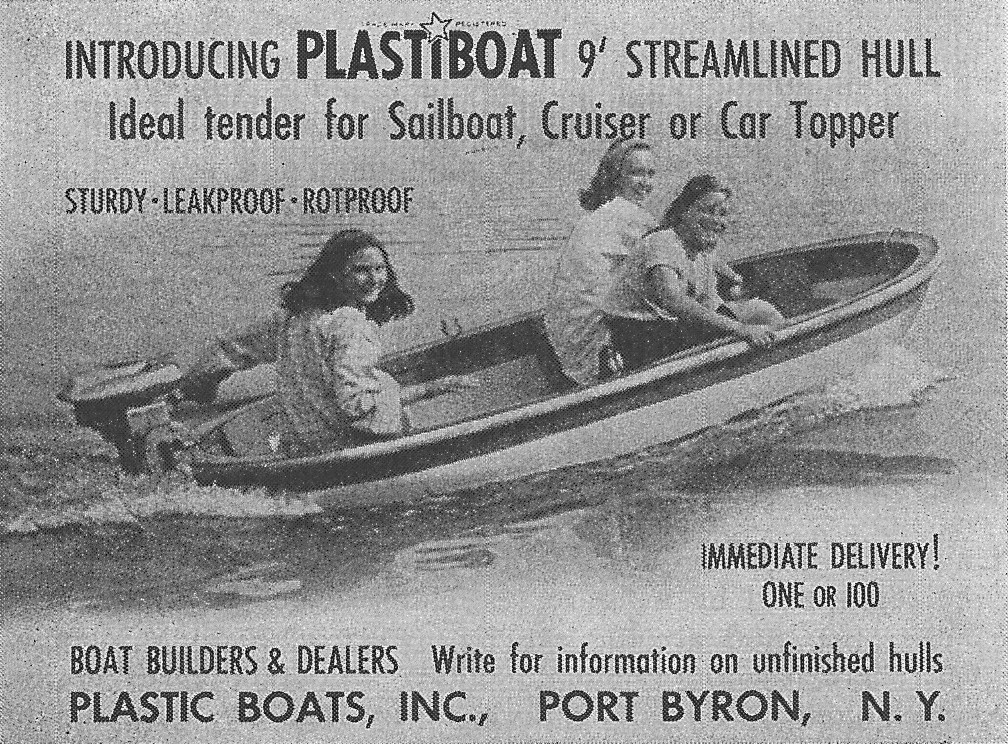Every so often, E-Bay will offer up an interesting historical item that helps to tell a story about Port Byron. So when this ad from the Plastic Boats, Inc of Port Byron showed up, I had to purchase it. The ad must have been cut out of a motor boating magazine and a quick search showed that indeed, a plastic boat company had opened in the village in the spring of 1946. A Mr. Albert Pfeiffer of Detroit had leased space in the Dixon Block and would begin to turn out these nine foot long bathtub shaped boats upon order. The ad states that you could buy one or a hundred!
The Port Byron Chronicle gave some more information. Although Mr. Pfeiffer was from Detroit, he had set up the business in Lake Placid, and the Port Byron plant appears to have been a finishing plant. He had also set up a finishing plant in Ghent, NY, but would move all his operations here if he could find the suitable people. The boats were made of Co-Ro-Lite, a new wonder material that was lighter than cork and rot resistant. This appears to be an early form of fiberglass, but instead of using glass fibers, Columbia Rope had devised a process of coating rope fibers with “plastic”. The sheets of rope plastic were then applied to a wooden hull and then vacuum pressed. This process was outlined in the July 1945 issue of Popular Mechanics magazine, but gave the inventor as Egmont Arens. A couple months later, Motor Boating magazine carried an announcement from Columbia Rope that they were using their new Co-Ro-Lite to build one piece boat hulls.
The Chronicle noted that the hulls weighed about 50 pounds and would “be sold directly to home craftsmen, boat makers, armatures, or anyone who desires to make their own boat.” So if you had the money, you could buy the boat. And it appears to have been a kit, where you received all the parts, and then you finished and modified the hull as you desired. I am not quite sure of what the local company would be doing aside from finishing the hull and adding a floor. After the one ad and one newspaper article, no more was heard of Mr. Pfeiffer or Plastic Boats, Inc. It might be that he was looking for investors, or feeling out the market. It also appears that anyone could simply buy their own hull from the Columbia Rope Company and skip the middle man.
This was not the first time that Port Byron and the rope company were associated. In April of 1944, the papers carried a article about Columbia opening a branch factory in the Lowe Building to make airplane parts for the war effort. The plant would be called the Number 6 Mill and would operate as long as needed and that once the demand was over, the plant would close. The papers ran ads for every available female in Northern Cayuga County to help at the Port Byron plant. It was thought that 50 to 60 people would be needed. If you know of someone who worked at this plant, let me know. It would be interesting to hear how long the work lasted.
In the end, this turned out to be less a story about Port Byron and more about the rope factory. And it caused me to wonder if the local folks even got excited about the notion that a new company would be coming to Port Byron or if they looked at the ad and asked who would be silly enough to put an engine on a plastic bathtub.
